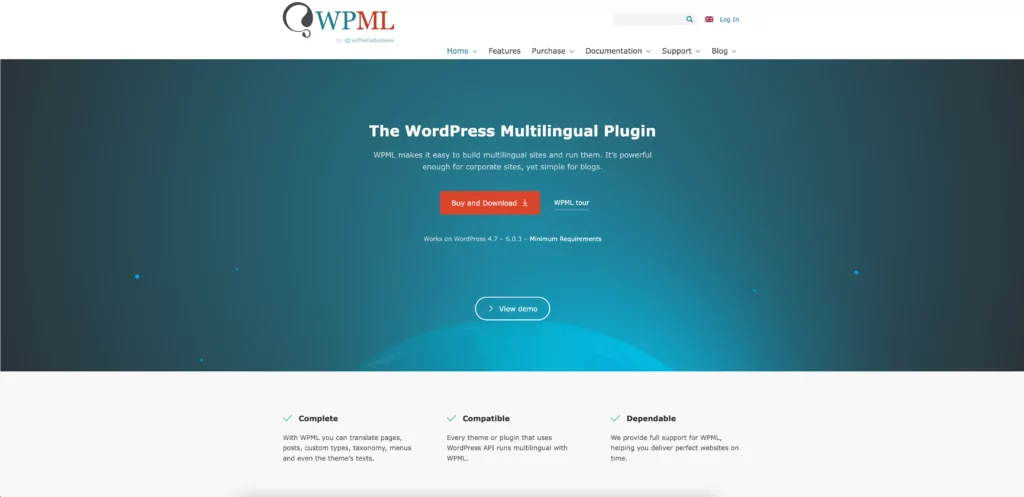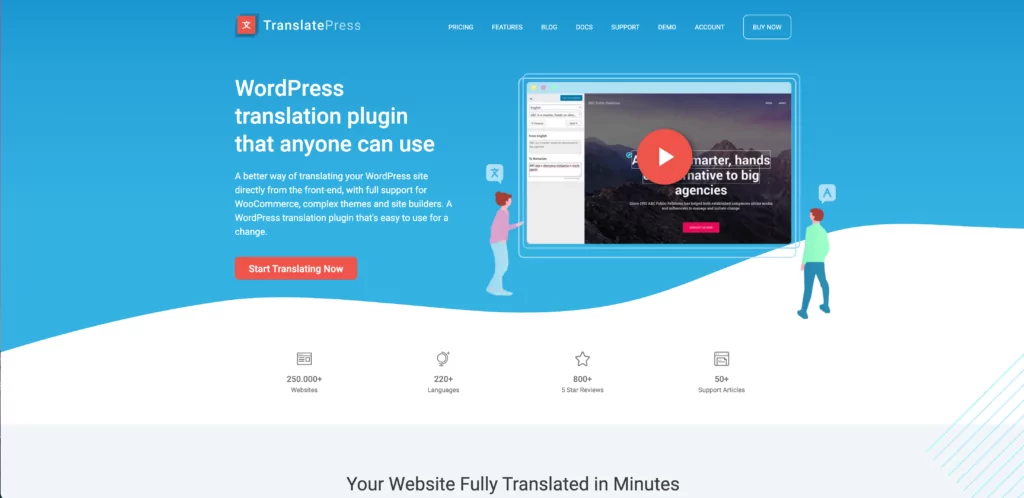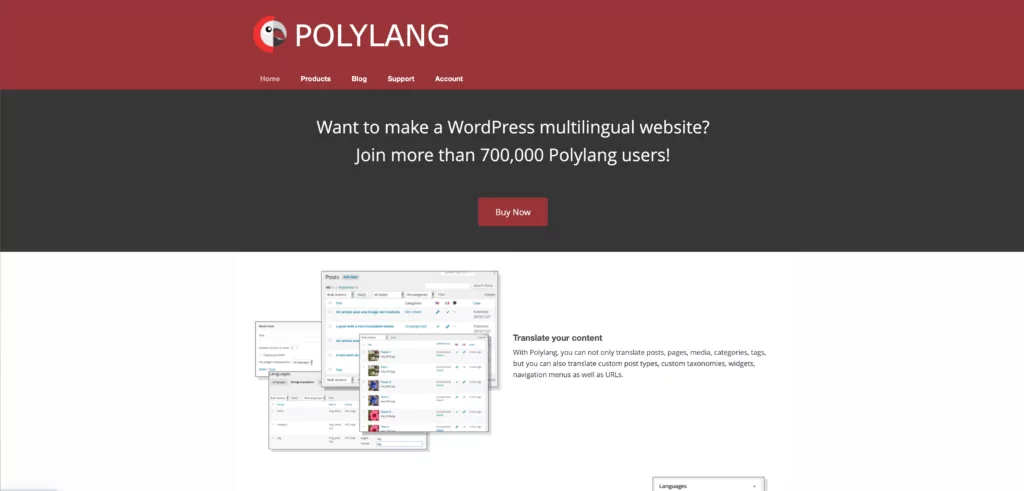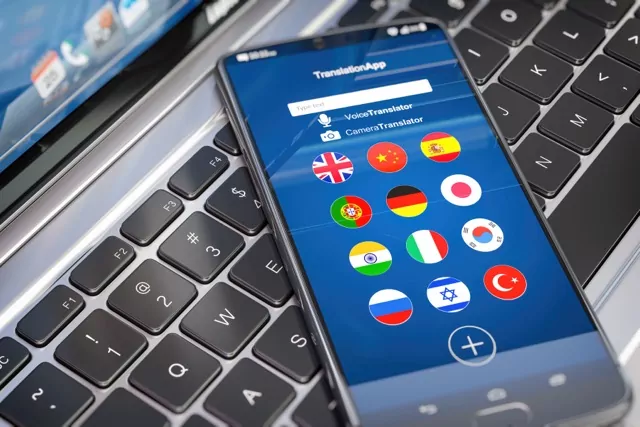Tabla de contenido
[zoomsounds id=”your-guide-to-creating-a-multilingual-website”]
One of the perks of running an online business is the ability to reach and serve overseas audiences. However, there’s one key obstacle that can hinder your chances of success: the language barrier. Therefore, adding multilingual website is now an important and far-reaching step in comprehensive web design.
Multilingual Website design features go far beyond what Google Translate is able to provide. It’s about how e-commerce sites can use sophisticated integration and deep learning tech in their content management systems (CMS).
Why Multilingual Websites are More Important Than Ever
The internet doesn’t just bring a world of information to your fingertips. It has also helped connect people from different geopolitical and socioeconomic backgrounds. Immense levels of cultural and commercial exchange have led the global village to flourish. That being said, there is still one area with room for improvement.
English is the top-used language both in the real world (narrowly ahead of Mandarin Chinese) as well as the internet. This has played a significant part in connecting people from different origins. Even today, the leading websites and online organizations do most of their business in English.
But despite this, there is another trend suggesting that the English language might not be the dominant tongue of the digital realm. Different sources suggest that the percentage of English content on the web has sunken significantly since the mid-90s.
This doesn’t mean that less English-speakers are online today; quite the contrary. As the internet expands its reach, more and more people are using its English-based content. However, since it was first established, the world wide web has seen an escalation in the number of non-English content and users.
European languages in particular are beginning to dominate cyberspace like French, German, Spanish, Russian, Dutch, and several others. This means that online users from across the globe are increasingly preferring their mother tongues to communicate with each other. There are two ways to look at how this can be.
Cultural Preservation
As English bridges the gap between countries, inclusivity and cultural assimilation have become much easier. However, while there are more English speakers than there once were, native users of this otherwise widespread language are more of a minority. For most, it’s a second language.
And while most of them certainly appreciate that they understand it, there are many others who don’t. This can limit their ability to utilize the web in a way that isn’t really their fault?

So how do you provide them with content if they cannot comprehend what it is written in? Do they not have a right to the internet like the one who is currently reading this article with no help?
These are, of course, rhetorical questions. And not ones that haven’t been asked or considered before. For one thing, some markets haven’t let them or the lack of non-English content stop them.
China is one example where the national tongue is a source of great pride. To make things easier, they also use Baidu as their primary web service provider. Its search engine is among the top 10 websites on the entire website by traffic.
Others, like much of Europe, are also eschewing services that either prioritize or cater exclusively to Western users. And why not? If anything, it is in your favor to diversify your customer base by attending to such increasingly multicultural markets as the EU.
Plus, it is much easier to provide a thorough multilingual website experience than it once was. This, in turn, brings us to our next point.
The Improvement in Modern Multilingual Technology
As we mentioned earlier, offering a Multilingual experience to users has to be more robust and thorough than selecting a bit of text and using Google Translate to get a rough, often inaccurate or misleading interpretation.
Human language is complex, diverse, and full of nuance to which automated translators cannot always do justice. To avoid getting lost in translation, websites need a resource that uses in-depth, learning-based techniques for a more dedicated experience.
Through the hard work of developers, websites today have access to a range of manually fashioned plugins, extensions, and other multilingual website software. Rather than automatically shift words and phrases between tongues, this results in more substantial conveyance.
These resources go beyond recognizing and interchanging simple words or phrases. Niche or local expressions, idioms, dialects, and even slang can be swapped from one language to another without losing their meaning. This allows you to curate and design websites that can provide equally viable services to people from different backgrounds.
Is this technology perfect? For lingual purists, maybe not. But for online businesses and enterprises looking for new revenue channels, the possibilities are endless.
Crafting a Multilanguage Website
Depending on how you’re designing your website, adding multilingual features might not be an easy feat. But for users of WordPress, which is used by millions of online businesses in Europe and North America, there is a simple solution: multilingual plugins.
Content management systems like WordPress have become a mainstay in optimizing commercial web pages for improved traffic and impressions. Professional content creation services offer a lot to prospective digital corporations, like attractive graphics and user-friendly interfaces. Integrating multilingual website features is also a very real possibility.
What to Look for In a Plugin

WordPress users are pretty much spoiled for choice when it comes to translation plugins. But when you’re designing a website for business purposes, your goal is to attract traffic. For multilingual websites, that means certain criteria have to be filled in order to appeal to foreign patrons.
Thorough Results
In an e-commerce website, there is a lot of content that needs to be translated. This includes menus, extension elements, widgets, fields, tags, taxonomies, and much more. Whichever version of a plugin you’re using, make sure it can cover as much ground. And speaking of covering ground…
Range
Simply put, the more languages you get from a plugin, the better. In the EU alone, more than 20 different languages are used in an official capacity. By including diaspora and migrant communities, that number adds up.
Some plugins allow the manual inclusion of new languages. However, ideally, you need one with as many default options as possible.
Consistency
On a web page, content exists in a number of forms, especially text. Variations in font types, color, size, and spacing are all parts of a business’s web layout. It’s not just about looking stylish, but about branding and proprietary front-end design. Any good translation tool should therefore do its job without disrupting this design.
Manual and Automatic Translation
As we hinted earlier, web translation can be automated or optimized manually. Both have their benefits and drawbacks for a multilingual website design.
The manually executed translation is usually more accurate, but it’s time-consuming. You’re likely better off hiring a fluent translator to do the job. Automatic translation is easier to implement, but the results of a robot interpreting text between languages don’t always translate well.
Given this, adding both methods to your sites should be possible through your plugin of choice. You can manually translate larger, more complex text content and use automatic tools like DeepL or Google Translate to handle simpler bits on your site.
DeepL is particularly great as, rather than acting as a digital dictionary, it uses artificial intelligence to optimize multilingual websites.

Professional Business Presentation
Do you need a redesign or a new website for your business?
Complete solution for small, medium or corporate business presentation. Great UX/UI designers, experienced programmers and high emphasis on testing. If you are looking for a professional partner for your business in the online world, contact us!
Customizability
It’s near impossible for your plugin to get everything right from the start. As such, rather than start again with new software, many plugins allow users to customize translation settings.
One way is where the limitations of machine translation can be fixed by adjusting them without the hassle of full-scale manual translation. In fact, this is often seen as the “third” translation method after automated and manual.
Another area involves integrating other plugins besides Google Translate and DeepL. For instance, there are some third-party resources that can be used along with manual and plugin-based translation. Any WordPress tool which can sync with such services is preferable.
WooCommerce Support
The WooCommerce extension provides appointment, payment, accessibility, and various other services to WordPress stores and business sites.
It also provides effective solutions for multilingual websites, but it cannot achieve them on its own. Therefore, your chosen plugin needs to be compatible with WooCommerce as well.
SEO Capabilities
As multilingual plugins are meant to help you reach a wider online audience, they should also help boost your site’s search engine rankings. This includes
- Customizable URLs for different nationalities
- Content translations that Google can crawl, including subheadings and meta tags
Top 4 Multilingual Plugins for WordPress
1. WPML
This is one of the most popular and robust translation systems available to WordPress users and is highly recommended for multilingual websites.

This plugin has been around for longer than much of its competition and is currently used by nearly half a million sites. It is known for its in-depth and accurate translation, fantastic interface, and all-around top-tier capabilities.
Pros
- Unlimited translation at any pricing
- 40+ default language options
- Allows automatic, manual, and custom translation
- Thorough and consistent results
- WooCommerce-compatible
- Default DeepL integration; Google Translate can also be added
- Syncs with professional third-party translators
- URL customization for SEO
Cons
- Steep learning curve
- No free version is available
2. TranslatePress
If for whatever reason, WPML isn’t your cup of tea, this one is a fantastic alternative, currently believed to be installed more than 100,000 times.

A unique feature of TranslatePress is that, while other plugins require backend operation, this one can translate the site entirely from the front page of your multilingual website design.
It is also capable of lightning-fast translations through Google Translate integration, though that requires an API key. It also has SEO capabilities by virtue of the SEO add-on pack, which allows URL modification and page description crawling.
Pros
- 200+ language options
- Realtime front-end translation
- Allows automatic, manual, and custom translation
- Thorough and consistent results
- WooCommerce-compatible
- URL customization for SEO
- Free Google Translate integration (with API key)
Cons
- The free version no longer available
- No default DeepL or Google Translate integration; users must provide their own API key
- Cannot connect with third-party translators
3. PolyLang
This plugin, unlike the last two, is available to download for free. However, dedicated patrons might prefer its two €99 versions (with and without WooCommerce support) as well as the €139 business pack.

With PolyLang, you can add text in any non-English language and have it seamlessly translated into another one from the available choices. This includes not just the main text, but also string characters, widgets, and URL slugs.
It is fantastically easy to use and offers all three translation types through integration with the Lingotek extension. As such, it is a favorite among some multilingual website moderators.
Pros
- Allows automatic, manual, and custom translation
- Thorough and consistent results
- Lingotek Integration for best results
- Easy switching between languages
- HTML tag customization for SEO
Cons
- No inbuilt auto-translation option
- Less support for a free version
- DeepL Integration needs a separate plugin
- Less language range than others (around 26)
- No URL slug customization for SEO
4. Loco Translate
Like PolyLang, this one also has free and paid versions with the latter starting at a monthly payment of €6 and up to €29 per month.
Apart from favorable pricing, Loco Translate has a more favorable learning curve which some beginners might prefer. Being a newer software, it’s not as popular but still has great market potential among WordPress Plugins.
Pros
- Best pricing
- Easier to use
- Great for quick translations
- Allows manual and automatic translation through add-ons
- “Unlimited” languages with paid options
- Integrates with DeepL, Google Translate, and other auto-translate APIs
- Supports SEO with plugins like Yoast SEO
Cons
- Not the best value for money; less robust features
- Cannot translate all web page features
- Just 10 languages with a free version
- Limited translation, even with paid options
- No language switching
A Brief Comparison
For the most part, you’re allowed to select whichever plugin you want for your multilingual website. But for serious results, there is a need to weigh the positives and negatives that each brings to the table.
From the very start, Loco Translate is certainly cheap, but its lack of features compared to its competition is simply not enough. Sure, it’s easy to work with, but web design isn’t a beginner’s game. When designing a multilingual site, you need something with more substance.
TranslatePress and PolyLang certainly have their unique benefits, as well as overall prowess as WordPress plugins. But WPML brings basically everything to the table, including inbuilt features, third-party integration, and other utilities which others lack.
Verdict
In the end, it’s hard to argue against the general superiority of WPML as a multilingual plugin for WordPress.
As for the “cons”, WPML is excellent value for money given what you get despite its pricing. And as for the learning curve, its complexities are just proof of how much it can offer online business owners in terms of multilingual website capabilities.
Plus, e-commerce services like WeLoveWeb are well-versed in these plugins and provide outsourceable web development services at amazing prices.
In Closing
Designing a multilingual website is not the hardest thing if you know which plugin to use and where you can find services that can help you in your mission.
But once you’ve succeeded, the results will benefit your site and the multitude of new users it will get.







